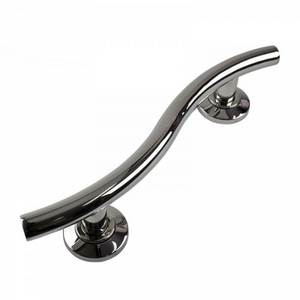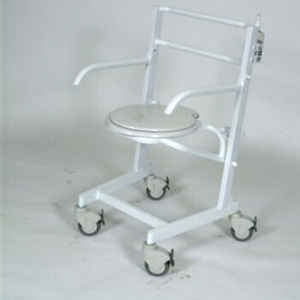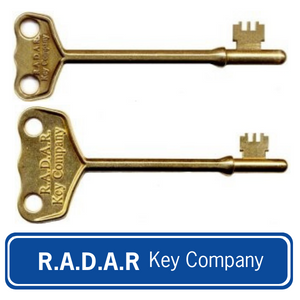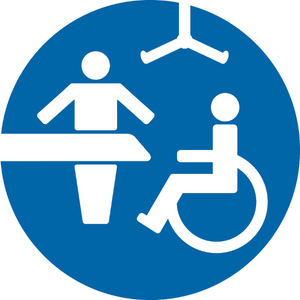Toilet Hints and Tips for Independence
Breaking the toilet taboo!
Let's face it, we all have to go somewhere, somehow and this topic can be the key to staying independent for many older and disabled people. Read on for a few hints and tips about toilets, inside and outside the home.
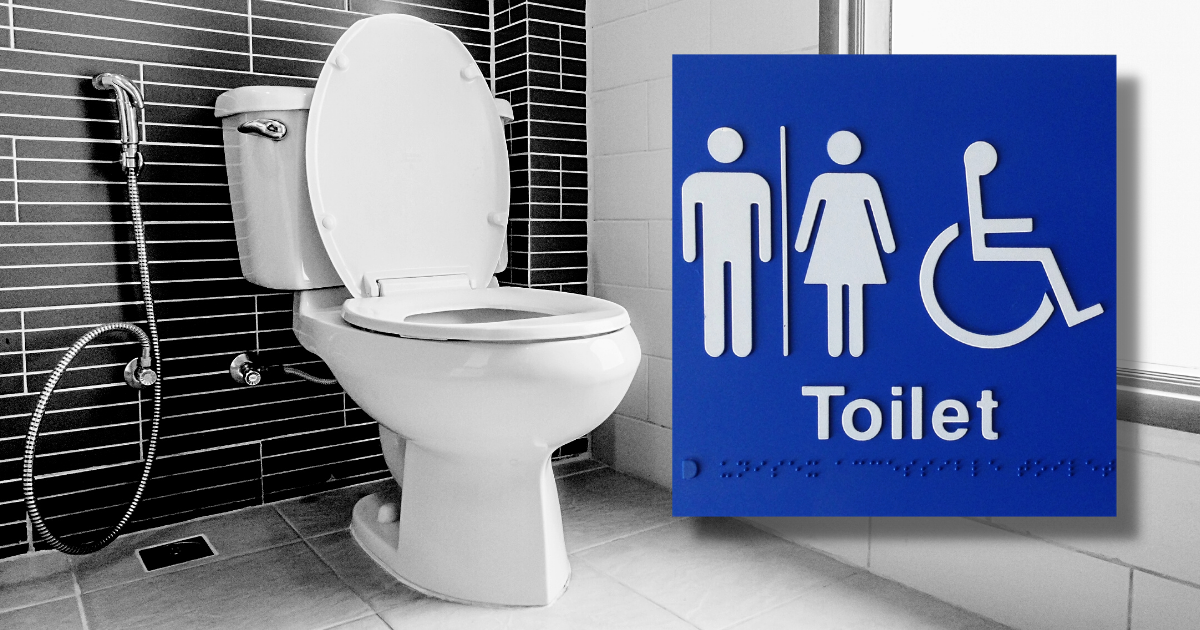
Toilets and toileting can be a taboo subject and let’s face it, we all have to go somehow and somewhere! It is an essential, but very personal, daily living task. Where possible, everyone would choose to maintain independence, privacy and dignity. Different conditions and situations lead to different levels of help and support being required and there a wide range of solutions that can help, whatever the need.
Help with toilets in the home
Living Made Easy hosts a wealth of information on toilets, toileting aids and adaptations and almost 900 different products, but where to start?
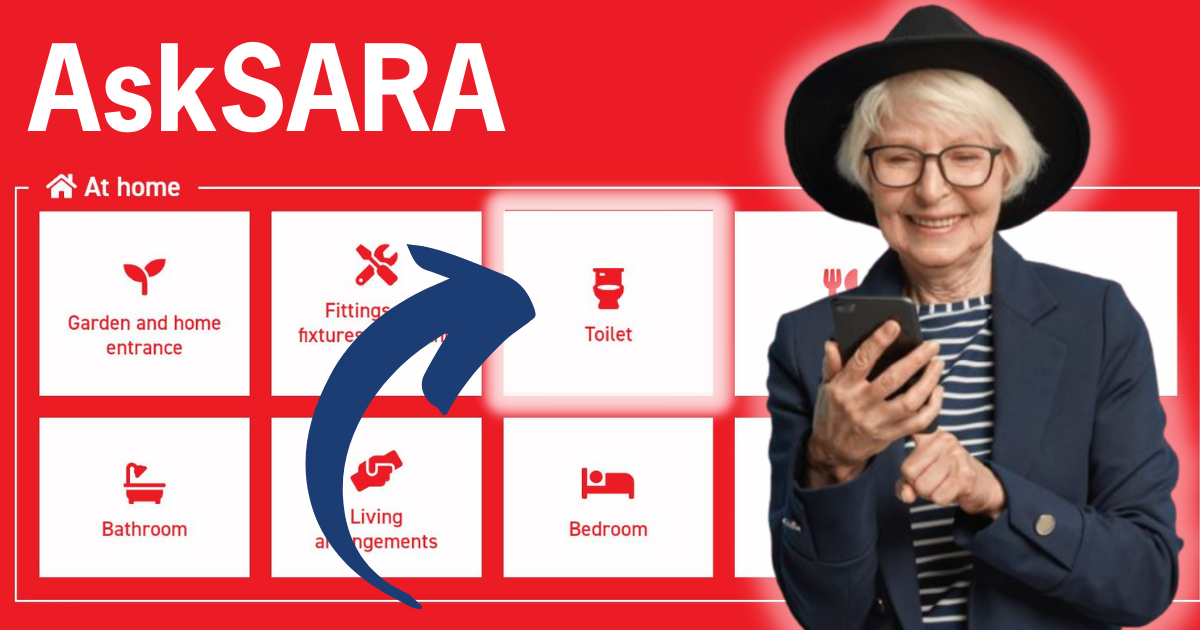
This article will give you some pointers, but you might like to use our AskSARA self-assessment tool as well. Select the toilet topic in AskSARA and answer a few simple questions for a more personalised set of recommendations. AskSARA will also indicate if you should ask for a needs assessment, which everyone is entitled to, regardless of their financial situation, more on this below. Living Made Easy product category pages can also offer help in product selection through filtering and our Guides to Choosing a Product.
There are many elements to consider including access to toilet facilities, transferring on and off the toilet and tending to oneself. If you have a problem, solutions can generally be found by altering your approach to the required tasks, using special equipment, or if a simpler solution cannot be found, altering the home environment.
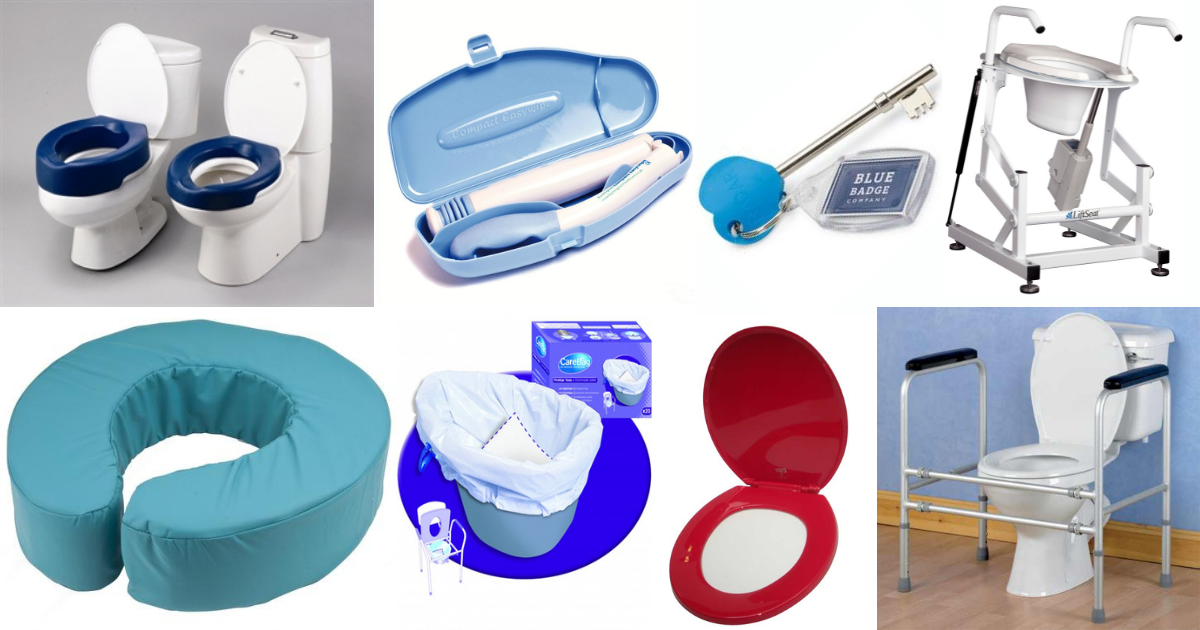
Assessing your needs
If you have not had an opportunity to discuss your toileting difficulties with a professional, you are strongly advised to seek an assessment of your situation. Talk to your GP as they can refer you to a specialist, if necessary. Depending on your needs, they may refer you to your local continence service. A continence adviser is a specialist nurse who can give advice and support on all aspects of the treatment and management of incontinence.
Care Act 2014
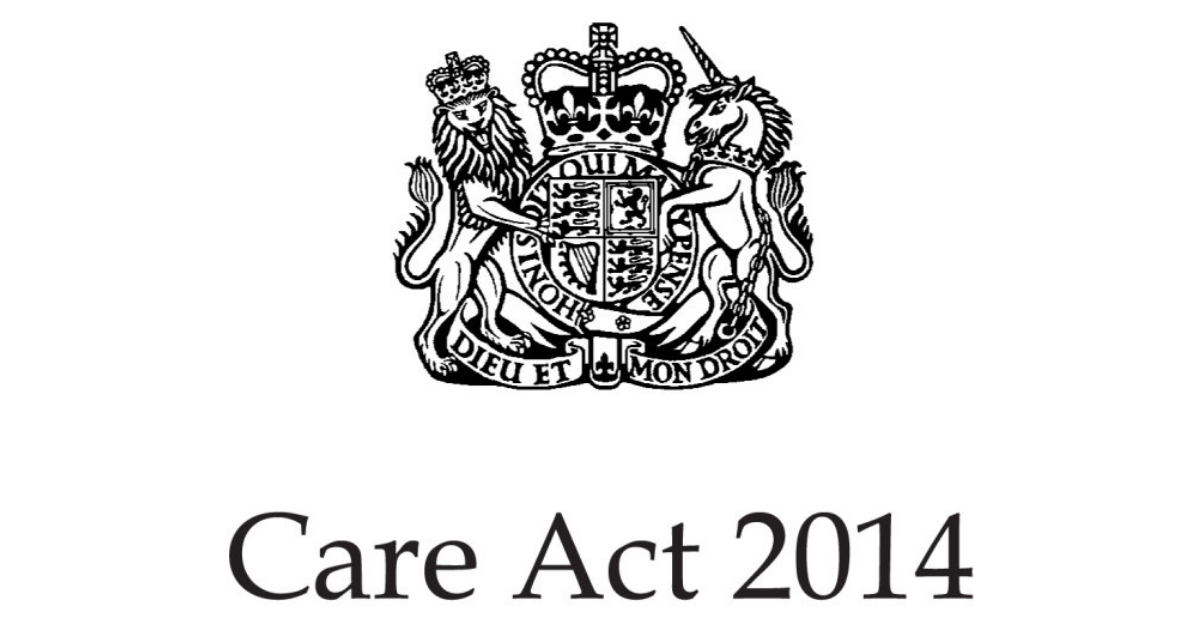
If you are struggling accessing a toilet and managing your personal hygiene, consider asking for a health and social care needs assessment. Since the Care Act 2014 came into power in April 2015, anyone who appears to need care and support can request an assessment from their local council or health and social care provider, irrespective of their income or savings. The Act also places a statutory duty on local authorities and the NHS to support individuals to take steps to prevent their ill health or care requirements from getting worse. These strategies for prevention can include the early provision of equipment and services to help prevent, delay or reduce the development of needs for care and support.
The assessment aims to identify any difficulties you may be having in caring for yourself and how these impact upon your well-being. If you have someone who helps you, they can have a carers' assessment to see if they also need support to continue in their caring role.
Safety
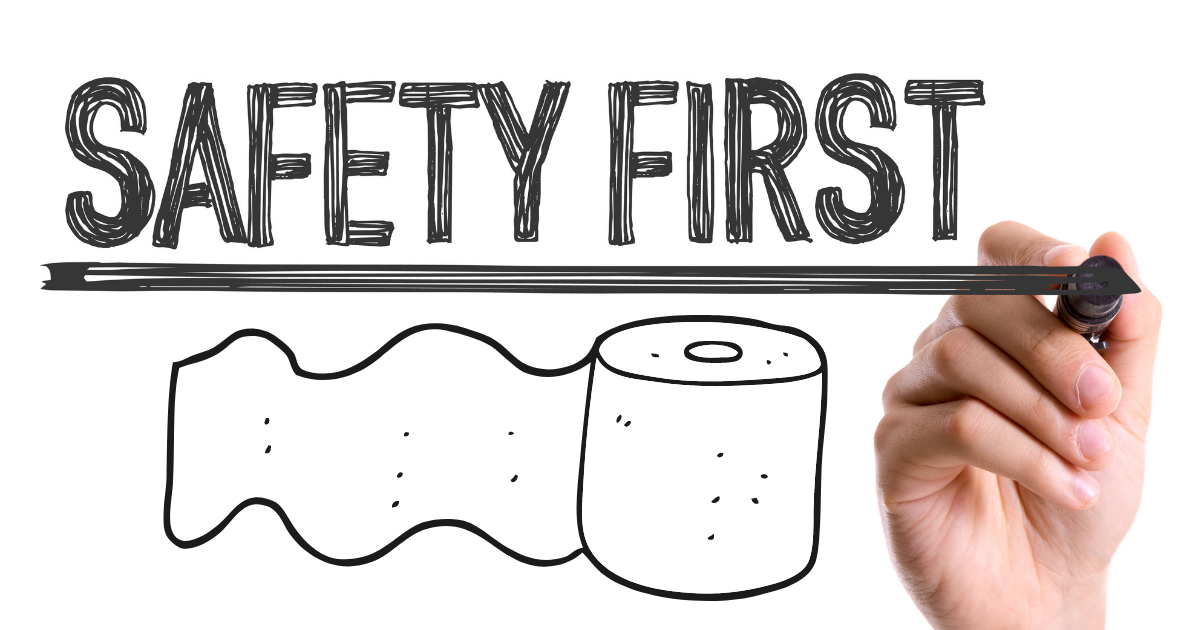
Safety is a major consideration. The following is some basic advice to maintain your safety:
Make sure your route through to the toilet is kept clear of obstructions.
Keep everything you need within reach.
Ensure that lighting is adequate, both within the toilet and along the route to it.
Avoid having a toilet pedestal mat as it might be a trip hazard.
Don't lock the door if you may need assistance; or use a lock that can be opened from the outside with a coin or screwdriver.
An outward opening door provides better access in an emergency, should you fall behind the door.
You could consider fitting an alarm to make it easier to summon help in an emergency. It is also essential that any specialist equipment is checked routinely for signs of wear and tear, and that fittings are regularly tightened.
Common difficulties and advice to help
If you have walking difficulties:
Do not leave getting to the toilet to the last minute. Try to anticipate when you might need to go, for example when you wake up or after lunch. Give yourself enough time to avoid rushing.
Consider having facilities both upstairs and downstairs, so you have easy access throughout the day and night.
If you use equipment to assist your walking, can it be used easily and safely in the confined space of a toilet?
If you have difficulty sitting down and standing up:
Check that the height of the toilet is appropriate to your needs.
Avoid using the bathroom furniture, e.g. the sink, to help yourself move around the bathroom.
Use a raised toilet seat or frame. Take a look at our Living Made Easy Toilet Seat category.
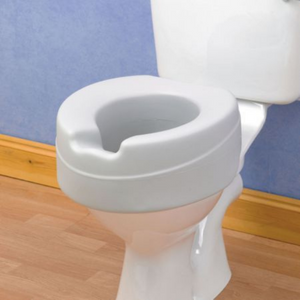 | 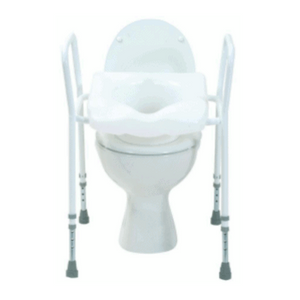 |
If you use walking equipment, avoid using that equipment to help you stand or sit.
Attach grab rails to adjacent walls. Take a look at our Living Made Easy Wall Mounted Rails category.
If you are sat in a chair for long periods of time, raise your lower legs occasionally to keep your muscles in use.
If you use a wheelchair:
Consider how you can maintain your independence, for example by installing equipment to help with transfers on and off the toilet; by positioning grab rails in strategic places; or by using a sanichair.
Take a look at our Living Made Easy Commodes category.
Use a wheelchair with features to help with transfers, for example, removable or flip-up armrests and footrests.
Transfers are easier when the height of your toilet is the same as the seat height of your wheelchair.
If you have limited hand/arm function:
Choose clothing that can be handled/adjusted easily, for example Velcro fastenings.
Use a bottom wiper or bidet to clean yourself. Take a look at our Living Made Easy Toilets and Bidets category.
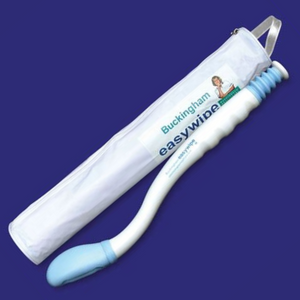 | 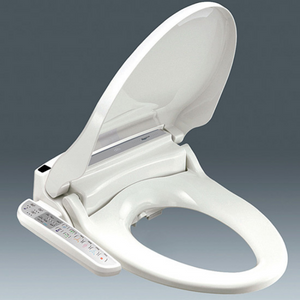 |
Look at alternative flush controls.
If you have poor sitting balance:
Check the height of your toilet and make sure your feet are flat on the floor when seated.
Look at equipment that provides additional support, for example toilet backrests, gated grab rail systems and over-toilet chairs.
If you have urgency:
Consult your GP - urgency can be caused by a medical problem such as a urinary tract infection.
Try to anticipate when you may need to go, for example when you wake up or after lunch.
Consider having facilities both upstairs and downstairs, so you have easy access throughout the day and night.
Choose clothing that can be handled/adjusted more easily.
Seek advice from a continence nurse or a specialist organisation such as the Bladder and Bowel Foundation.
If you have frequency:
Consult your GP - there may be a medical reason such as an infection or the medication you are taking that is causing your frequency.
You may have developed a habit of frequently emptying your bladder. Retraining the bladder and tightening your pelvic floor muscles may help. Seek advice from a continence nurse or a specialist organisation such as the Bladder and Bowel Foundation.
Consider having facilities both upstairs and downstairs, so you have easy access throughout the day and night.
Help with toilets out and about
Anxiety about access to the toilet and managing activities associated with toileting when out and about can spoil a person’s enjoyment. Planning before a journey or trip out can help, for example:
Use the toilet at home before setting off on a journey;
Think about the journey times and whether you will need to plan stops;
Wear clothing that is easy to manage;
Phone ahead to find out about facilities;
Buy a RADAR key (available from RADAR) or from local authorities;
Use directories such as the RADAR national key scheme guide;
Carry a portable urinal with you for emergencies.
Remember drinking is important to maintain fluid balance in the body and to regulate body temperature. It can be dangerous to avoid drinking purely because of anxieties about managing the toilet.
Accessible Toilets
Accessible public toilets are designed to provide better facilities with more space and might also be fitted with a special lock to give access only to people with disabilities. Keys are available from local councils, or from the organisation RADAR’s National Key Scheme for a small charge. RADAR also holds a list of the public toilets that belong to this National Key Scheme and apps are also available to help you find accessible toilets when you are out and about.
Euan’s Guide, the disabled access review site, champions Safer Toilets with its Red Cord Card scheme, providing a reminder that the red emergency cord in accessible toilets should be left to hang to the ground for use in an emergency.
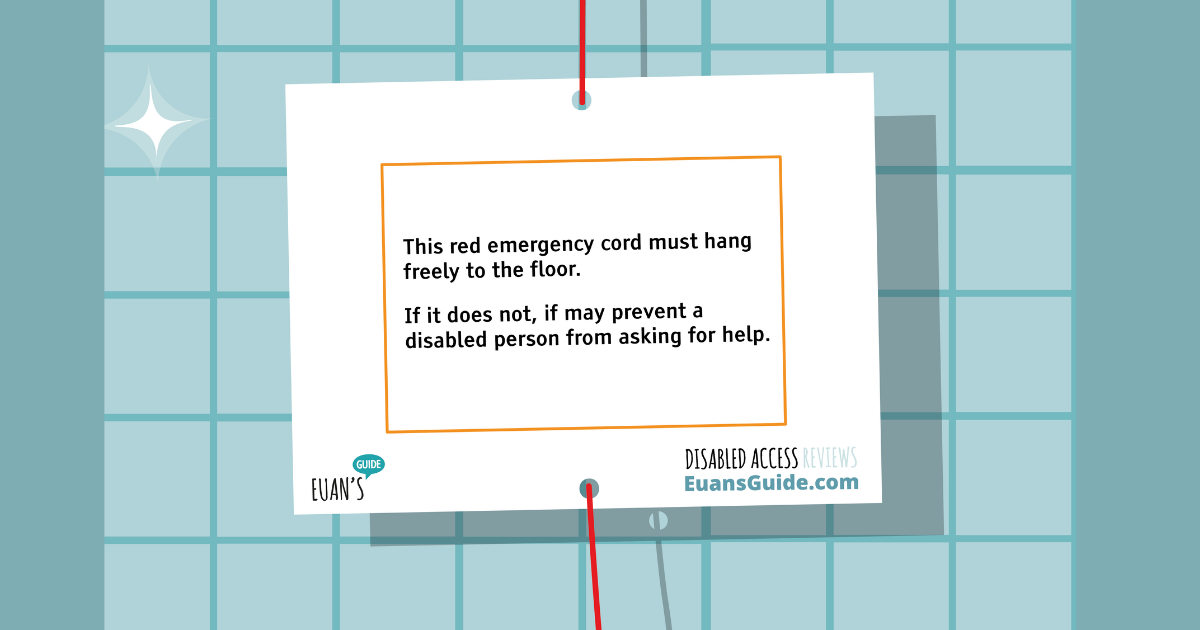
More than accessible toilets - Changing Places
Changing Places are much more than accessible toilets. For those needing extra equipment and space, these needs are met by Changing Places toilets. With almost 1,700 changing places now available in the UK, Changing Places can be found through their website.
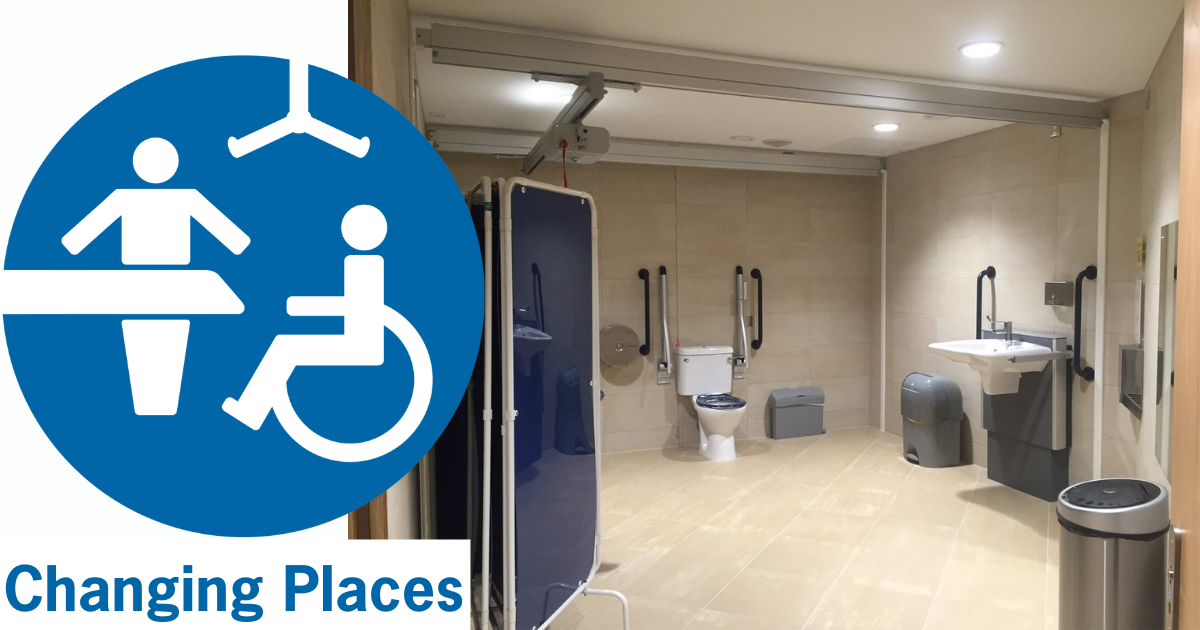
For more information on toilet accessories, toilet aids and toilet adaptations, you can click on the following links:
Try the Toilet Topic in AskSARA
You can also use the main navigation at the top of Living Made Easy to navigate through Health and Personal Care to Bathing and toileting categories or click on the links below:
Toilet/Commode and Shower Chairs
Other useful links mentioned in this news story:
Euan’s Guide, Red Cord Campaign
